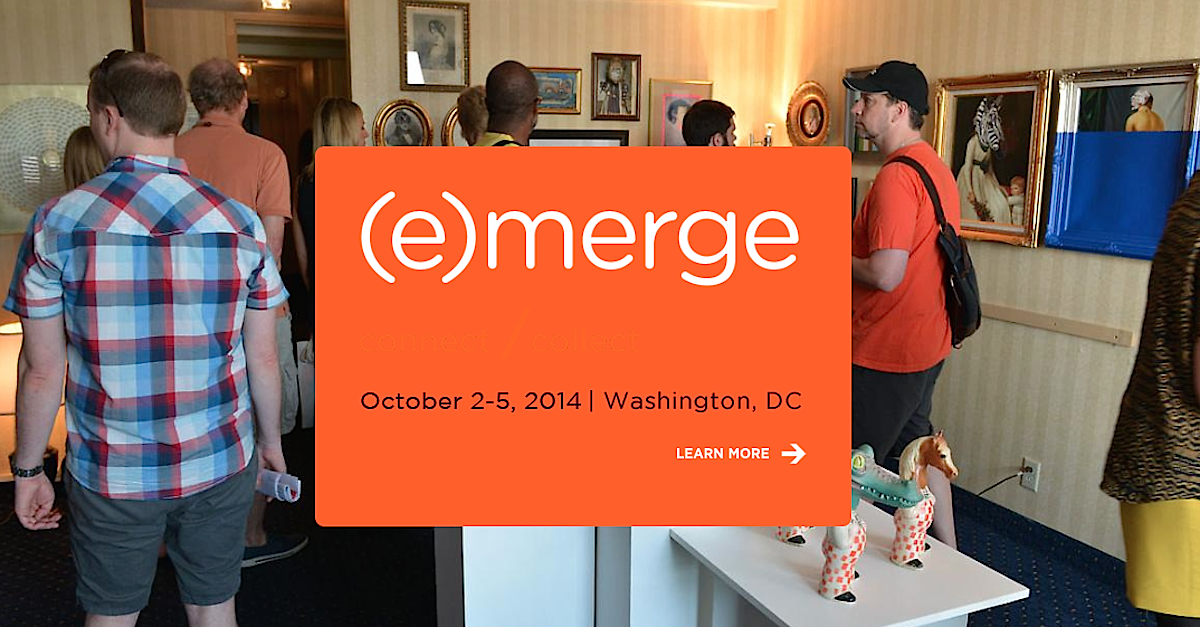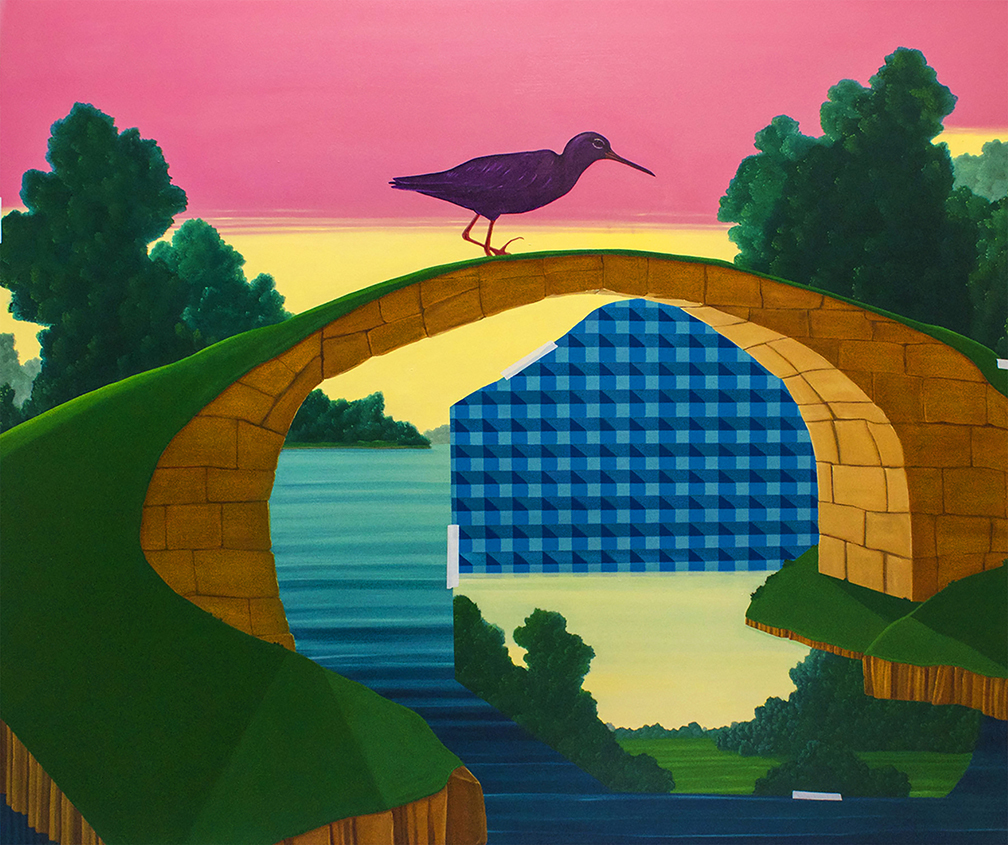Matthew Mann’s Associative Fugue at Project 4 reviewed by Michael Iacovone
The title of Matthew Mann’s show, Associative Fugue, is the first clue in figuring out the underlying context of the subject matter. “A fugue,” it is explained in the gallery statement, “in music is a composition built on repeated themes. In psychiatry, a fugue is a temporary, dissociative state where one experiences a loss of awareness of their identity, sometimes associated with a flight from one’s usual environment.” These two definitions of fugue are a good start, but there’s a lot more you’ll need to consider when viewing this series.
The paintings Mann exhibits in this show are deliberately hard to read, but, as a series, contain similar imagery and subjects, including analogous background landscapes, birds, and geometric patterns. Orderly decoration appears in each of the paintings, sometimes as wallpaper or textile in a half rendered room, and other times out of context, to separate opposing perspectives. Mann’s paintings don’t read as complete narratives, more vignettes of disjointed stories.
Behind a bright, soothing palette there is confusion, tension, and unseen antagonists to ecourage the viewer to decode each scene like a forensic scientist. Though they might initially seem so, these paintings are not Surrealist or dreamlike. Rather, they feature bits of specificity, woven into complex settings. Though the settings appear natural or familiar, the subjects are purposely alienating, so that the viewer will question all the disparate elements.
In Void Watcher (pictured above), a bird crosses a grassy bridge in a serene setting of trees and water, yet the perspective jarringly changes within the painting. Beyond and in front of the bridge, a blue geometric grid is presented, hanging by strips of masking tape and attached to a second horizon, paradoxically below the water. The viewer isn’t permitted to find comfort in the scenario, instead you find yourself trying to link the imagery. Disassociation and artifice add to the viewer’s confusion, but the perspective changes are managed well enough that you want to combine it into a cohesive whole.
In the most intriguing painting of the series, Caladrius, Mann gives his audience more pointed and aggressive clues. The title refers to a bird from Roman mythology that kings were said to keep for a specific purpose: whenever anyone fell ill, the Caladrius only look at a person who would make a full recovery. In this painting the bird is not looking at the patient, but he is also standing on his head, in front of a broken window. The flocked wallpaper, and repeated paintings juxtapose serenity with a grim scene. You can’t help but wonder, is this a crime scene, or is this the calm passing of a fallen king? The confusion of the fugue state renders the questions unanswerable, yet the questions themselves add to their success.

In the painting Anatomy of Grass, carefully rendered strips of green masking tape act as another foil to keep the viewer at bay, while also standing as a placeholder for a striped textile. The viewer is left to speculate about the foreground of meticulously painted and luscious field of grass while a bird is implied with pink negative space. Is this a fleeting memory of a bird? Is this a hiding place?

A headless cowboy is the antagonist in Anxiety Bandit, yet the bird resting on open ceiling joist above him might actually carry that burden. The cowboy is sitting in front of a painting, but did he paint it? Or is he, like the audience, trying to figure out how these clues are related? The way each object is painted in all Mann’s images are noticeably deliberate, yet their meaning and arrangements give only hints of insight.

The more I look at Matthew Mann’s paintings, the more convinced I am that he’s a disjointed storyteller who refuses to let his audience listen passively. He is also an accomplished painter, with a visual style that is distinct and memorable with a gift for images both consumable and thought provoking. Rather than seeming unfinished, the hints of story and kinetic ideas Mann presents manage to wrap themselves up together, and the incomplete stories give you a chance to form your own. It’s like missing the series finale of your favorite TV show – you know you want more, but if you skip the last one, you can deny a finite ending.
Matthew Mann’s Associative Fugue runs through October 18th, 2014.
Project 4 Gallery is located at 1353 U St. NW, Washington DC.
Author Michael Dax Iacovone is a DC based artist who works in photo, video, maps and installation.






